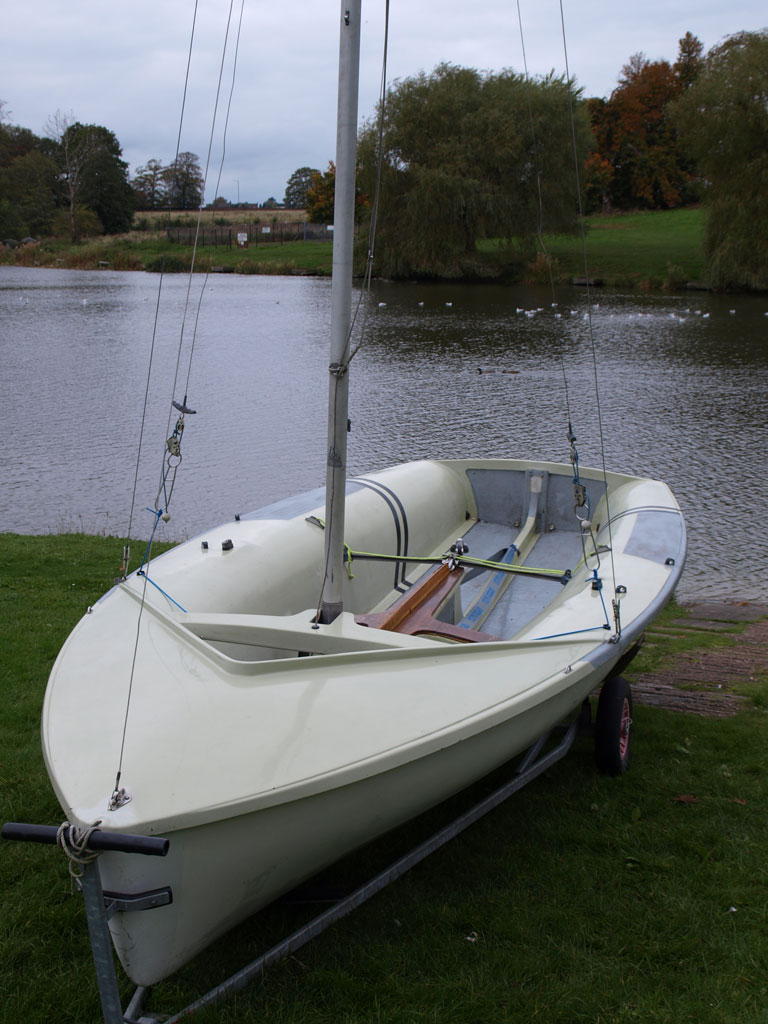EDIT:
after thinking about this more, and discussing with some more experienced ASRC builders: this was, and remains, a pretty awful idea.
In the bin it goes.
------------------------------------------------------
Ok. hear me out. The ASRC is, canonically, a 'rowboat you can sail'. 60/40? 55/45? In the interest of rounding out the balance of 'a sailboat you can row' (50/50!), I have an idea that I'm hoping for some constructive feedback on.
Inspired by sailboats like the 420 and the VX1, with wide, rounded, forgiving rails that you can hike comfortably on for hours at a time. But, also inspired by things like @Colin Angus 's need for a 'hiking board', and my own experience on thin/squared rails like the Thistle giving a bad case of 'rail tail', even with hiking shorts.
- Pros
- a little less cramped/more open space for rowing
- more comfortable hiking for long periods
- can hike much farther out (with our without hiking board/aka support) without the gunwale digging in your backside (hiking strap is implied, not shown)
- less water over the rails when heeling (see detailed explanation below)
- modest increase in storage area/bouyancy
- looks cool AF
- other pros???
- Cons
- hatch access would be limited to under sliding seat rail and/or from inside cabin
- that said, a single large hatch could be placed very far aft on the rounded surface, with a flange. Most upwind hiking on the ASRC seems to weight all the way forward, right up against the aka, for a flat boat fore/aft. So a deck plate all the way aft wouldn't be in the way often. Or maybe just make the seat a 'flat angle' (see VX one) instead of rounded, to accomodate whatever hatch configuration is desired with flat/flush hatches and no flange needed.
- modest added weight
- modest added complexity to construction
- other cons???
- hatch access would be limited to under sliding seat rail and/or from inside cabin

Proposed design impacts the section between the two pink lines, and (potentially) continuing under the rigger arm up to the bulkhead in front of the mizzen step.

Note, the highest point above the waterline in both designs is exactly the same (see below). Believe it or not much less water ingress will occur in proposed design when over-heeling . Why? In current design, once water tips over the rail, its in the boat no matter what - eventually headed out through the self bailing. In proposed design, water would have to climb all the way up the flat surface of the seat..so another 6-8 inches before it would enter the boat (and then only if you heeled back down at that exact moment). Imagine the image below 'heeled' with the red line at a 20-30' angle or so to visualize the 'climb'.
The proposed design also has an inverted lip to further minimize water ingress when heeling dramatically. See VX One pic for an example of a similar lip in actual design/practice (or many other fiberglass one designs sailboats)
Note this is a COMPOSITE image that shows the lines from both original and proposed designs.

VXOne:

420:



